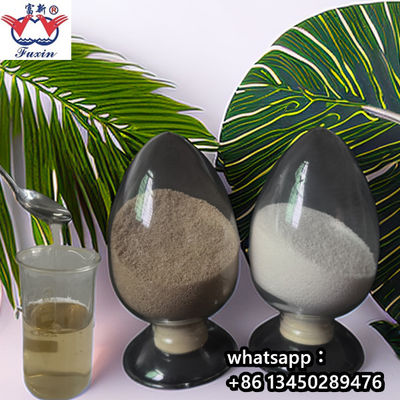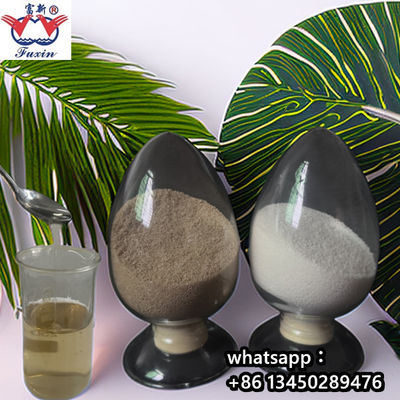Product Description:
Textile Printing Paste is a specially formulated mixture used in the textile industry to create printed designs on fabric. It is composed of a range of components, including pigments, dyes, thickeners, binders, and other additives. All of these elements work together to provide the desired color, texture, and durability.
The main purpose of Textile Printing Paste is to transfer colors onto fabric surfaces with accuracy and evenness. Moreover, it provides essential viscoelastic properties that ensure that the paste remain adhered to the fabric during the printing process. This maintains the shape and definition of the printed design.
Thickeners are added to the paste to control viscosity and enhance printing results. Examples of these include pigment printing thickeners and reactive printing thickeners. Thickeners help to prevent issues, such as color bleeding, whilst ensuring that the patterns and designs are sharp and defined.
Binders, such as acrylics, polymers, waxes, and polyurethanes, are also included in the paste. They ensure that the color remains firmly attached to the fabric and improve its resistance to water and chemicals.
Features:
Sodium carboxymethyl cellulose aqueous solution is clear, transparent, homogeneous and has favorable stability. Furthermore, its viscosity won't be affected by mechanical force, so it has no change with pump cycle or stirring. It is stored in the size tank and not affected by the temperature or bacteria so can be taken at any time according to production needs.
Sodium carboxymethyl cellulose aqueous solution is full of viscidity and film-forming property. It can form smooth, wear-resistant, and flexible film on the surface of warp, bear the absolute strength, relative activity and friction of weaving machine, so it helps to provide favorable conditions for weaving more exquisite high grade fabric and high-speed production.
The yarn processed with Sodium carboxymethyl cellulose aqueous solution is easily dry and glossy, with a soft hand feel. Furthermore, desizing is very convenient without chemical treatment or the consumption of desizing agents.
The yarn count and fabric processed with sodium carboxymethyl cellulose aqueous solution won't get yellowing or mildewed, so it can dramatically reduce substandard goods with defective spots or greasy dirt, and avoid damages by worms or rats.
When starch is used as the size, it needs to have a full set of precise machinery and control instrument with complicated operations. However, using cellulose gum can greatly simplify the requirements, improve the sanitary condition of workshop, making the maintenance of mechanical equipment more convenient, and meanwhile enhance the production capacity of weaving machine.
Applications:
Apparel Manufacturing: Textile Printing Paste is widely used in apparel manufacturing for adding decorative patterns and designs to the garments. It is suitable for multiple types of fabrics, including cotton, silk, polyester, and blends. This paste is applied through screen printing, roller printing, or digital printing techniques, improving the appearance and commercial value of the garments.
Home Textiles: Textile Printing Paste plays a role in furnishing products, such as bed linens, curtains, upholstery fabrics, and tablecloths. It enables the printing of detailed patterns and decorations, allowing customization of home decor.
Promotional Products: This paste is useful for creating custom-made promotional items, such as bags, caps, and t-shirts. Logos, slogans, and graphics can be printed with precision and lasting permanence to enhance the visibility of the promoted products, boosting brand recognition.
Support and Services:
At Textile Printing Paste, we offer comprehensive technical support and service to help you get the most out of your product. Our support team is available to answer any questions you may have about using the product, and to provide troubleshooting advice in the event of an issue. We also offer a satisfaction guarantee, so that if you are not completely satisfied with your purchase, we will provide a refund or exchange. Our technical support staff are highly trained and knowledgeable, so you can be sure you are getting the best advice and support available.
Performance of Ultra High DS CMC


Left pic:Dyed color granular CMC 2% solution Right pic: The left is standard product made in Italy. The middle and right are Fuxin different types of CMC.
Specification
| TYPE |
Degree of Substitution (DS) |
Viscosity
(Brookfield,1%soln.,20℃)
|
pH |
Moisture |
Particle Size |
| 10H |
1 |
2500-3000cps |
6.5-8.5 |
≤15% |
20-70 mesh |
| 13H |
1.3 |
1500-2500cps |
| 15H |
1.5 |
1000-2000cps |
| 18H |
1.8 |
800-1600cps |
| Y002 |
2 |
800-1500cps |
| Y230 |
2.3 |
600-1000cps |
*Kindly contact us for specification and information about any specific grade of CMC other than mentioned in the above table.
Powder or granular available, we recomed customer to purchase the brown granle type CMC to sell as sodium alginate for higher profit.
Technique Process
▲Dissolve the dyes and add into the paste, make the color paste with thickener→▲Printing→▲Drying (100 ℃)→▲Baking or steaming→▲Washing→▲Soaping→▲Rinsing→▲Post treatment procedure.
Dissolution Methods and Proportion:
How to make the paste?
1. The ratio depends on DS level, low DS product should mix with pure sodium alginate to reach a better performance, while ultra high DS product can 100% replace SA.
2. Proportion: same as sodium alginate original paste preparing. Firstly add 65% water, stir the water while adding the product evenly and slowly, then speed up the stirrer for 20-25 minutes. And then add the remaining 35% water, stir for another 20-30 minutes. Leave for 15 minutes.
How to make sure the paste dissove completely?
1. Powder and water completely fuse, not exist solid-liquid separation phenomenon.
2. Paste is dissolved evenly, the surface is smooth, no granular objects.
Packing and Shipping:
Packaging and Shipping for Textile Printing Paste:
- The paste should be packaged in airtight and waterproof containers.
- Shipping should be done in a way that will ensure the product is not exposed to extreme temperatures or humidity.
- The containers should be properly labelled with the product name and expiration date.
- If possible, the containers should be insulated to help preserve the product.

 Your message must be between 20-3,000 characters!
Your message must be between 20-3,000 characters! Please check your E-mail!
Please check your E-mail!  Your message must be between 20-3,000 characters!
Your message must be between 20-3,000 characters! Please check your E-mail!
Please check your E-mail! 



